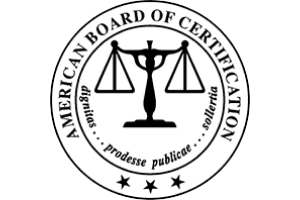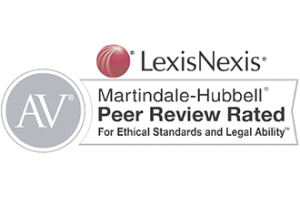Get a Fresh Start With Us
General Bankruptcy FAQs
- What Are the Different Types of Bankruptcy and Their Eligibility Requirements?
- What Are the Principal Goals and Aims of Bankruptcy?
- What Is the Bankruptcy Estate?
- What Is the Automatic Stay and What Is Its Scope?
- Who Are the Usual Players in a Bankruptcy Case?
- What Is a Preference Claim?
- What Is a Fraudulent Transfer Claim?
What Are the Different Types of Bankruptcy and Their Eligibility Requirements?
The U.S. Bankruptcy Code provides for the following types of bankruptcy filing:
Chapter 7 — Liquidation — provides for the liquidation of a debtor’s assets by a trustee to raise cash to pay off creditors’ claims. The stages in a chapter 7 case are discussed below. Companies, as well as individuals, can file for chapter 7 (individual consumer debtors are subject to eligibility requirements, discussed below). Spouses can file a joint-case. The 2005 Amendments to the Bankruptcy Case have increased the complexity of individual consumer chapter 7 cases (discussed further below).
Chapter 9 – Municipal Bankruptcy – protects financially-distressed municipalities from creditors while the municipality creates and negotiates plans to adjust its debts.
Chapter 11 – Reorganization – provides for reorganization of a debtor under a reorganization plan that is voted on by the debtor’s creditors. However, it is possible for a business debtor to liquidate its assets in chapter 11 under a “liquidating plan”. Companies as well as individuals can file for chapter 11. However, chapter 11 is typically not suitable for individual or consumer debtors unless they have a high net worth or high income. The stages in a chapter 11 case are discussed below.
Chapter 12 – Family Farmer or Fisherman Debt Adjustment – provides for adjustment of debts of a family farmer or fisherman with regular income and subject to certain debt caps.
Chapter 13 – Wage Earner Debt Adjustment – provides for adjustment of debts of an individual with regular income (spouses can file a joint-case). Total unsecured debt cannot exceed $419,275 and secured debt cannot exceed $1,257,850.
Chapter 15 – Ancillary and Other Cross-Border Case – provides a mechanism for dealing with foreign bankruptcy cases where the debtor has assets or creditors in the U.S.
What Are the Principal Goals and Aims of Bankruptcy?
The purpose of bankruptcy is to provide a forum for a financially troubled debtor to deal with all his, her or its creditors in a single unified proceeding, and a mechanism to satisfy creditors’ claims. For a business, the goal of bankruptcy is either to provide an orderly liquidation of the debtor and its assets or to reorganize. For an individual, the goal of bankruptcy is to get his or her debts wiped out. The Bankruptcy Code provides for a “discharge” of debts — which is the elimination of the individual debtor’s personal liability for his or her pre-bankruptcy debts (subject to certain exceptions discussed below). The discharge of debt is intended to give the debtor a fresh start.
What Is the Bankruptcy Estate?
Upon the filing of a bankruptcy case by or against a debtor, an “estate” is created consisting of all of the debtor’s property wherever located in the world. This holds true whether the debtor is an individual or business entity (such as a partnership, corporation or limited liability company). The bankruptcy estate is protected from creditors by the automatic stay discussed below.
What Is the Automatic Stay and What Is Its Scope?
The stay bars action by all creditors to enforce their pre-bankruptcy claims against the debtor and the debtor’s property, regardless of whether the creditor had notice of the commencement of the debtor’s bankruptcy case. Filing a bankruptcy petition triggers the automatic stay. Action taken by creditors that violates the stay is not legally binding and is void. Actions of this type include filing a lawsuit against the debtor after the debtor files for bankruptcy, without permission of the Bankruptcy Court. There are limited exceptions to the stay, including for governmental agencies to enforce health, safety and public welfare laws and for domestic support obligations, among others. Creditors also can move to have the stay lifted for “cause” including lack of adequate protection of an interest in property. In addition, if a creditor is stayed as to property of the estate (for instance, property subject to the creditor’s lien, such as a mortgage), the creditor can also obtain relief from stay if it can establish that the debtor has no equity in the property and it is not necessary to an effective reorganization.
Who Are the Usual Players in a Bankruptcy Case?
There are a variety of players in a bankruptcy case as follows:
Debtor – is the person or business that files for bankruptcy relief.
Trustee – is the person appointed by the U.S. Trustee in a chapter 7 case (or elected by creditors to replace the person appointed by the U.S. Trustee in a chapter 7 case) to collect and liquidate the assets of the debtor. In a chapter 11 case, if the Court orders the appointment of a trustee for cause one is appointed by the U.S. Trustee and takes over the management of the debtor and ousts its existing management. Most trustees are attorneys or accountants.
U.S. Trustee – A branch of the Department of Justice tasked with overseeing the administration of bankruptcy cases. The U.S. Trustee plays an oversight role, particularly in chapter 11 cases.
Creditors Committee – A committee of creditors appointed in chapter 11 cases by the U.S. Trustee usually consisting of creditors who hold the seven largest unsecured claims against the debtor. The creditors committee acts as a representative body to advance the interests of unsecured creditors as a whole. In many bankruptcy cases there is insufficient creditor interest for a creditors committee to be formed. Committee members are unpaid but receive reimbursement of expenses. A creditors committee may, subject to Bankruptcy Court approval, hire professionals, such as attorneys, accountants and financial advisors to represent the committee and advance the interests of unsecured creditors in the bankruptcy case. The fees of such professional are paid out of the debtor’s bankruptcy estate and not by individual committee members.
Bankruptcy Court – The bankruptcy court is a federal court of the United States and constitutes a unit of the district court. In some locations the bankruptcy court is housed in the same building as the district court, while in others it is in a separate building.
Bankruptcy Judge – A bankruptcy judge is a judge appointed for a 14 year term by the Court of Appeals in the federal district in which the bankruptcy court is located. Most bankruptcy judges previously worked as attorneys in private practice or for the government.
Secured Creditor – A creditor that is secured by a lien against property of the debtor as the result of a voluntary agreement that the debtor entered into (such as, for example, a bank loan secured by a lien on assets, a mortgage on real estate, or a car loan secured by a vehicle), or as the result of a court judgment or order (such as, for example, a judgment lien recorded against real estate, or a writ of attachment against a debtor’s equipment), or as the result of a particular law (such as tax liens, that create a lien against the debtor’s property when certain notice and filing requirements are met).
Unsecured Creditor – A creditor who has a claim that is not secured by a lien against property of the debtor.
Priority Creditor – Certain types of claims are priority claims under the Bankruptcy Code. These are claims that get paid in full before any distribution is made to general unsecured claims. Priority claims include most tax claims and domestic support obligations (alimony, child support, etc.).
What Is a Preference Claim?
A preference under the Bankruptcy Code is a payment on a pre-existing debt made to a creditor within 90 days prior to the date of the debtor’s bankruptcy filing (or one year in the case of a transfer to an “insider” of the debtor) that allows the creditor to recover more than it would recover if the assets of the debtor were liquidated in a case under chapter 7 and the creditor received a proportionate distribution on its claim along with other creditors in same class and entitled to the same priority of treatment under the Bankruptcy Code. The intent of the Bankruptcy Code is that similarly situated creditors should receive equal treatment. The preference law is intended to advance this and also prevent pre-bankruptcy collection efforts that disrupt the debtor’s business or financial affairs. Trustees (or debtors in possession in chapter 11 cases) have the ability to pursue preference claims. Trustees and DIPs often bring preference claims against all recipients of payments by a debtor during the 90 day pre-bankruptcy preference period. There are a number of defenses under the Bankruptcy Code to a preference claim that a defendant in a preference case may be able to utilize, most notably the “new value defense” and “ordinary course of business defense”.
What Is a Fraudulent Transfer Claim?
Claims of fraudulent transfer under the Bankruptcy Code are based on a transfer of money or other property of the debtor made within one year (two years for cases filed after October 17, 2006) prior to the date of the debtor’s bankruptcy filing, regardless of whether the transfer was made voluntarily or involuntarily by the debtor, if
(1) the debtor made the transfer with actual intent to defraud creditors, or (2) received less than reasonably equivalent value in exchange for the transfer and was either (a) insolvent (i.e., debts greater than assets or unable to pay debts as they became due in the ordinary course of business) or became insolvent because of the transfer, or (b) engaged in business for which the remaining capital of the debtor left after the transfer was unreasonably small. There are a number of defenses under the Bankruptcy Code to a fraudulent transfer claim that a defendant in a fraudulent transfer case may be able to utilize
.Client Reviews
NYC personal bankruptcy client: I just wanted to send a note to say "Thank you!" You made a very difficult situation much easier to comprehend and cope with - considering the decisions that one gets/comes to when facing bankruptcy. I wish you the best.
I want to to thank you very very much for your kind and considerate assistance on every step of the process. You saved me from a huge burden and I feel much happier, less stressed and capable of advancing my life further. THANK YOU!!!
NYC personal bankruptcy client: You have done a wonderful job and you have made what was an extremely difficult situation less difficult.
Search
Areas Served: Manhattan, Brooklyn, Bronx, Queens, Staten Island, Long Island, Westchester, Northern New Jersey

Contact Us
1. Over 60 Years of Combined Experience | 2. Big Firm Quality, Boutique Rates | 3. Attorneys Who Care About Your Needs
Fill out the contact form or call us at (888) 867-8165 or (212) 867-8165 to schedule your consultation*.







